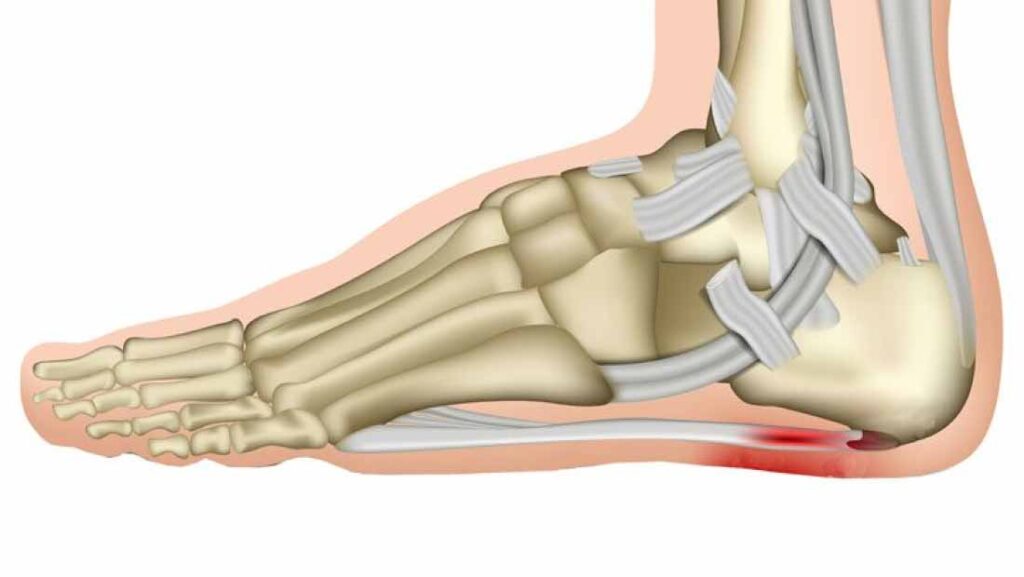There are several methods to treat plantar fasciitis. In this article you will learn about its symptoms and causes, as well as the different treatment options. If you experience pain in your heel and plantar fascia, you should be aware of these treatment options to reduce pain and maximize function. The best treatment for plantar fasciitis will be customized according to your needs and circumstances.
Treatment Options for Plantar Fasciitis
One of the most common chronic foot conditions, plantar fasciitis is a common source of heel pain. It accounts for more than one million outpatient visits each year and affects one in six people in the U.S. There are several treatment options available, from non-invasive conservative methods to surgical modalities. With conservative treatment, most people will experience relief from their symptoms within 12 to 18 months. However, the process of developing a personalized treatment plan can be time-consuming.
Non-invasive treatments include shockwave therapy and ultrasound therapy. A podiatrist can advise you on the right type of treatment for you. Your doctor will also offer advice on pain management techniques. In some cases, surgery is needed to remove damaged tissue and treat plantar fasciitis.
Shockwave therapy is another non-invasive treatment that can significantly reduce the symptoms of plantar fasciitis. Unlike surgical procedures, shockwave therapy is noninvasive and can be performed in an office. In a recent study, shockwave therapy was effective in reducing inflammation in the area and reducing the thickness of the plantar fascia. In addition, shockwave therapy can be performed on an outpatient basis and is less expensive than other forms of treatment.
If left untreated, plantar fasciitis can become chronic. It can make people walk differently and limit their activities. The condition is more common in women, but men can also suffer from it. The best treatment for plantar fasciitis will focus on correcting the underlying causes of the condition.
Treatment options for plantar fasciitis include rest, physical therapy, and medications. Newer treatment options include shockwave therapy, which uses high-frequency shockwaves to promote healing and reduce pain. However, shockwave therapy may not be right for everyone. In addition, the results of shockwave therapy are unpredictable.
Another method of treatment for plantar fasciitis is iontophoresis. In this procedure, an anti-inflammatory medication is given through an electrical current through healthy skin. It may be an option for people who are allergic to injections or who don’t feel relief with non-medical treatments.
Causes
Treatment options for plantar fasciitis vary, but often include over-the-counter medications and physical therapy. In some cases, a doctor may prescribe stronger anti-inflammatory drugs or steroid injections. Other treatments include stretches and cold compresses to relieve discomfort. In more severe cases, surgery may be recommended.
Plantar fasciitis is an inflammatory condition caused by too much force exerted on the plantar fascia. This can cause microtears in the band. Excessive force can be caused by the activity, weight, surface and height of the arch of the foot. Tight calves are also a risk factor. Repetitive bumps can also cause the band to break.
A person with plantar fasciitis should avoid standing on hard surfaces for long periods of time. It is best to wear supportive shoes while running or walking. Obesity can exacerbate the condition. In addition to biomechanical factors, plantar fasciitis can also be caused by nerve problems. Electrodiagnostic nerve tests are available to identify the presence of nerve damage.
Lack of proper foot alignment is another cause of plantar fasciitis. Lack of support can stress the plantar fascia and heel bone. People with weak feet are prone to plantar fasciitis and shoes should be adjusted accordingly. If the problem is not addressed soon, it can lead to other problems, such as pain in the knee, hip, and back.
Heel spurs can also be a cause of plantar fasciitis. They are calcium deposits that form at the bottom of the heel and irritate the plantar fascia. However, many people with plantar fasciitis do not suffer from heel spurs, so the diagnosis of this condition should not be based on the presence of heel spurs.
Overuse is another common cause. A sedentary lifestyle can cause a weak plantar fascia, making it susceptible to injury. In addition, obesity causes arch collapse, which increases tension in the plantar fascia. The best treatment for plantar fasciitis is to stop overuse of the foot and reduce the strain on the plantar fascia.
Patients with plantar fasciitis should consult a doctor if symptoms persist. The doctor will evaluate the cause of plantar fasciitis and recommend a course of treatment. While the pain can be extremely intense, most patients will experience a full recovery after undergoing treatment for plantar fasciitis.
Symptoms
People with plantar fasciitis often experience pain in the heel area. It may be sharp or dull and may be worse when standing or walking for a long time. Sometimes, it also feels like a bruise pressing against the heel. It is most often felt when you get out of bed for the first time or after spending a lot of time sitting. A health care provider can diagnose the condition based on your symptoms, although you may need to undergo some additional tests.
During a physical exam, a doctor will examine your foot and watch you walk and stand. He or she may also take a medical history. Your doctor may also want to know when your feet hurt the most and what physical activities cause pain. Sometimes, X-rays are needed to rule out other causes of your pain.
If you have persistent symptoms of plantar fasciitis, your healthcare provider may prescribe an anti-inflammatory medication. This may include ibuprofen or aspirin, or a stronger medication. Physical therapy may also be helpful. If these measures don’t work, your doctor may recommend surgery to help relieve your pain.
Symptoms of plantar fasciitis can vary from person to person and may include pain under the heel. It can also extend to the arch or even the back of the leg. The pain is usually more intense in the morning and less at night. It can also be intermittent, with pain-free periods. During the day, walking and standing can cause heel pain. It can also make walking and climbing stairs more difficult.
Is more common in people ages 40 to 60, although it can also occur in younger people. Many people develop plantar fasciitis due to improper foot mechanics or wearing shoes with insufficient cushioning. Wearing shoes with too much cushioning is also a contributing factor. As people age, the plantar fascia loses its elasticity. Women are more likely to develop plantar fasciitis than men.
Can be extremely painful and affect the quality of life for people with this condition. You can prevent them from going for a run in the morning or even walking to the kitchen. Luckily, Community Foot Clinic of McPherson is here to help.
Treatment Options for Plantar Fasciitis
There are a variety of treatment options for plantar fasciitis. For acute cases, steroid injections or nonsteroidal anti-inflammatory drugs can relieve pain and inflammation. Other treatments may include physical therapy, rest, and ice packs. Custom orthotics can also help reduce inflammation and relieve symptoms.
Physical therapy may include stretching the plantar fascia and strengthening the muscles of the lower leg. The athletic tape can also help support the bottom of the foot. Extracorporeal shockwave therapy (ESWT) can target the painful area with sound waves to stimulate the healing process. In some severe cases, surgery may be recommended to remove damaged tissue.
A podiatrist can recommend a variety of treatment options to relieve pain and reduce inflammation. Conservative treatment is usually the best option for people with mild symptoms. However, in severe cases, medications may be necessary. A podiatrist may also recommend limiting certain activities to relieve pain. Some patients may even lose weight by reducing the intensity of their activities.
Shockwave therapy can also be an effective treatment for plantar fasciitis. The shock waves produced by these waves reduce the thickening of the plantar fascia and help reduce symptoms. Another benefit of this treatment is its non-invasive nature. This treatment is available on an outpatient basis. The patient does not need to make special preparation for shockwave therapy. In some cases, local anesthesia or sedatives may be given before the procedure.
Another non-invasive treatment for plantar fasciitis is ultrasound. Ultrasound allows doctors to better evaluate the condition and determine the best treatment. It is a great tool for evaluating tendons and ligaments and can help diagnose the condition. Ultrasound increases accuracy and minimizes the risk of adverse effects. The procedure is relatively time-consuming, but can provide long-term relief. If the condition is chronic, it might be best to opt for surgery.
Other nonsurgical treatments for plantar fasciitis include stretching and strengthening exercises. Orthopedic inserts, night splints, and anti-inflammatory agents can also help relieve pain.


